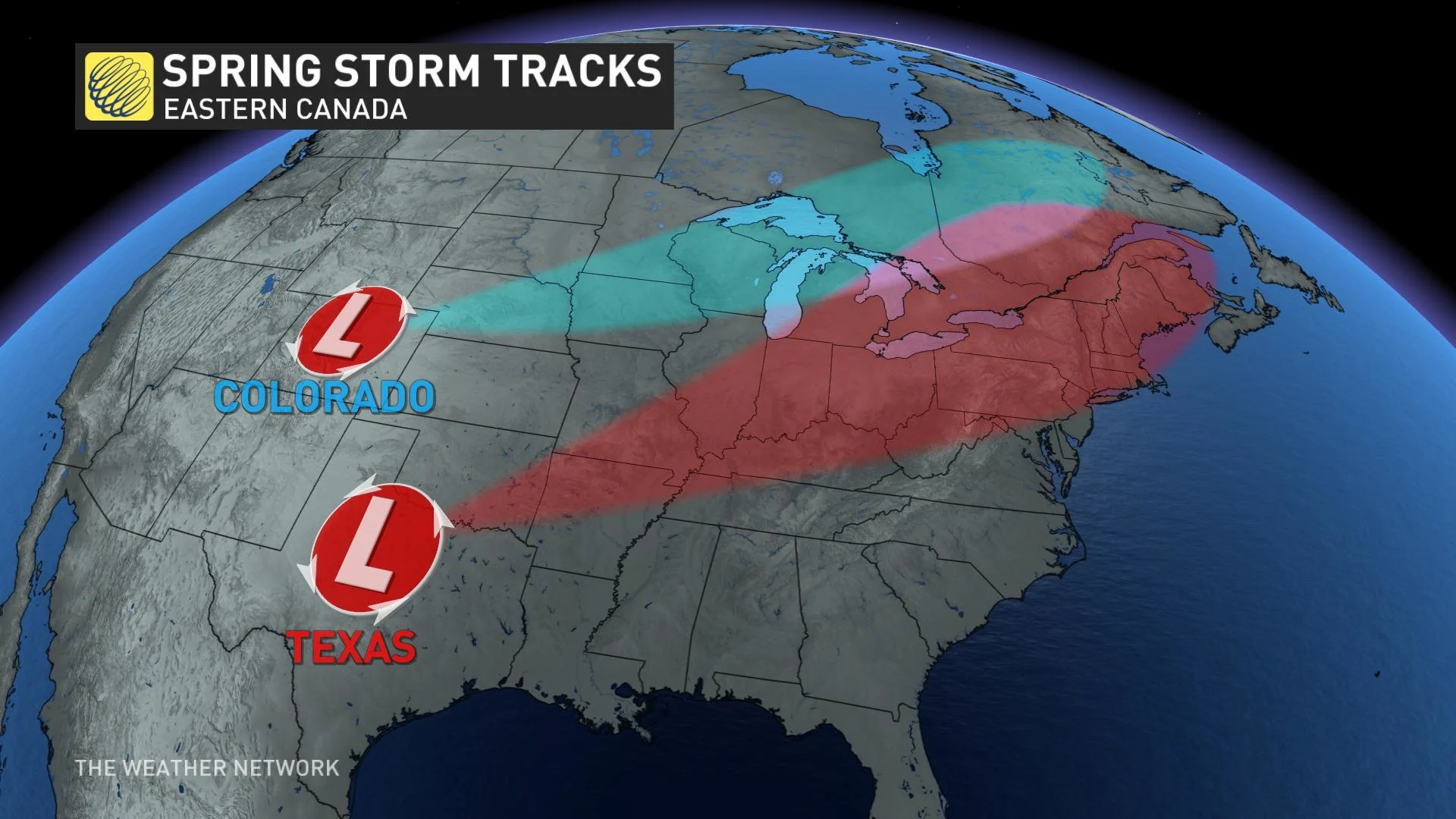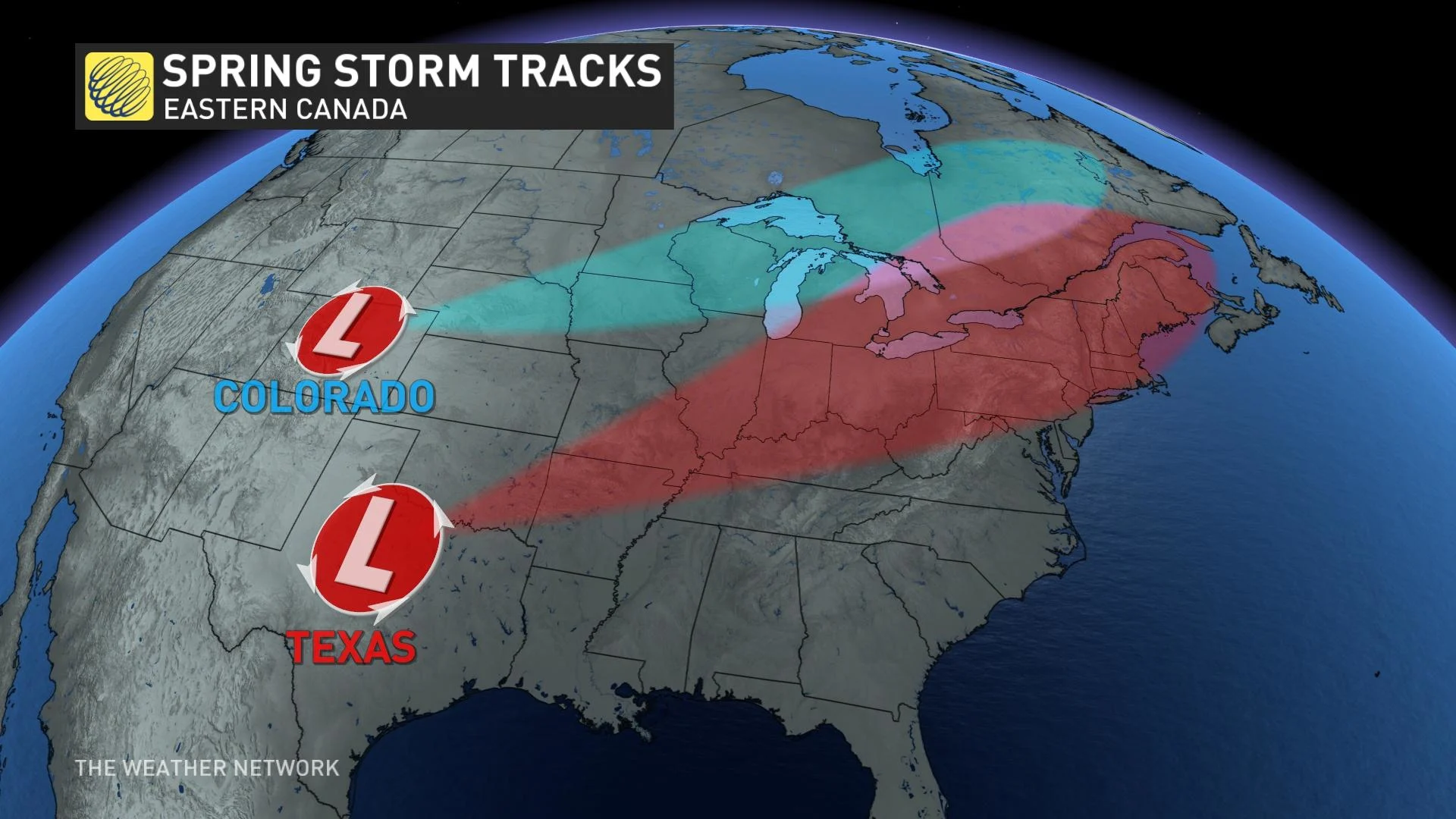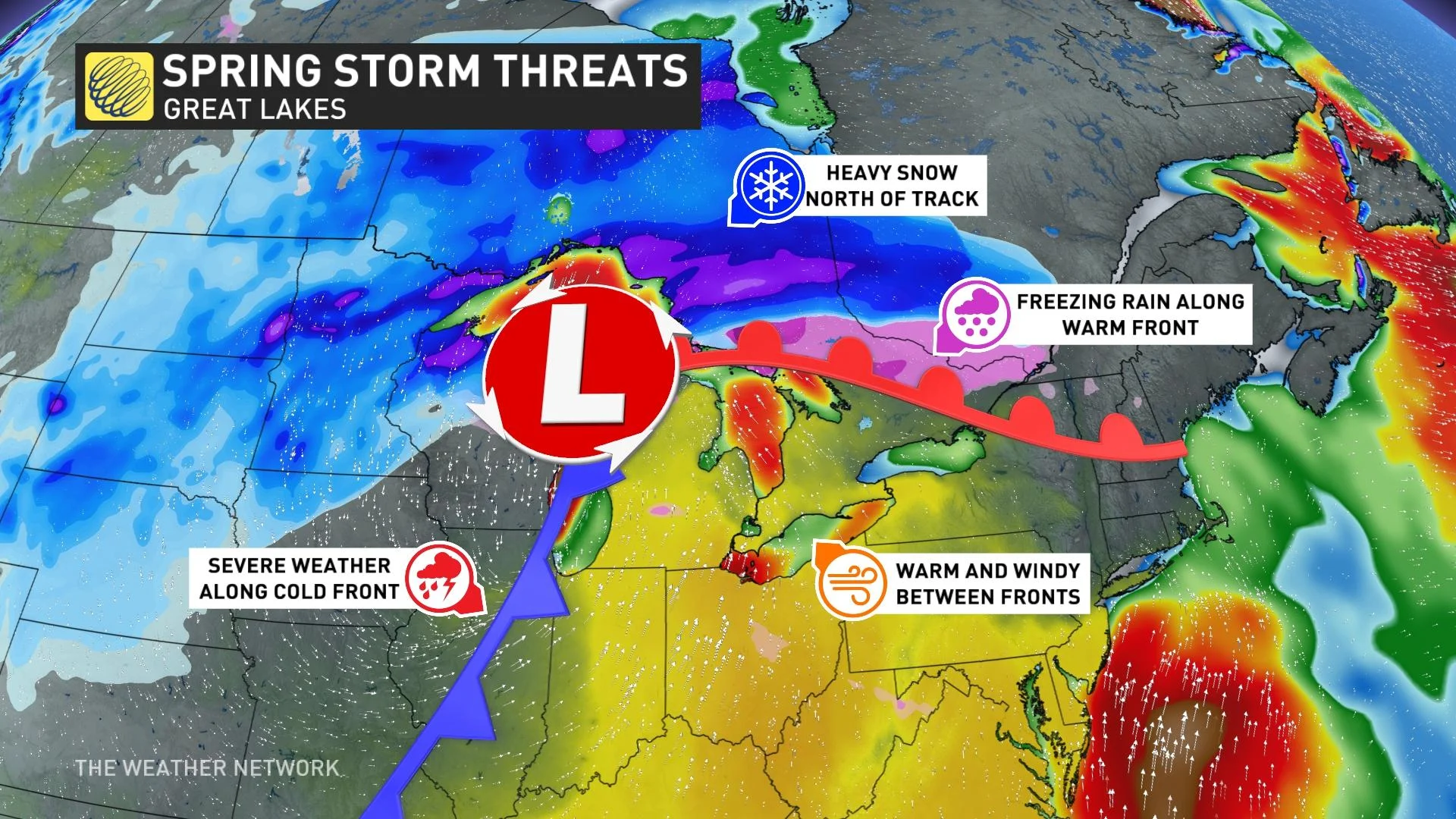
How Colorado lows and Texas lows affect our weather in Canada
We hear the terms ‘Colorado low’ and ‘Texas low’ in Canadian forecasts all the time. Here’s how these stateside storms can affect your weather.
The atmosphere is restless during the long transition from the cold depths of winter to the sultry warmth of summer. All that activity sends the jet stream into turmoil, allowing dynamic storms to spawn over the United States and sweep their active weather into Canada. Two of those storms in particular–Colorado lows and Texas lows—can have a significant impact on your everyday life. Here’s how.
SPRAWLING STORMS START HIGH IN THE SKY
Just about every big storm that rolls into Canada starts with the jet stream. These belts of wind roar above the cruising altitude for airliners and they can reach speeds in excess of 200 km/h.
Troughs in the jet stream, combined with speedier winds within called jet streaks, can force winds to rapidly spread out at high levels. This divergence causes air to rise from the surface to fill the void, leaving a centre of low pressure in its wake.
We often see these low-pressure systems develop on the eastern side of the Rocky Mountains when a strong trough dives over the mountain range.
The strength and length of the trough often determines where this low-pressure centre will develop. A longer, deeper trough will allow the low to form around the Texas Panhandle, while a shorter trough will cause the low to form around Colorado.
LEARN MORE: 'Weather bombs' - Explosive storms that create ferocious conditions
TWO LOWS, SIMILAR EFFECTS
There’s not much daylight between a Colorado low and a Texas low. The major difference lies in where each low-pressure system forms, which in turn will determine where we’ll see the biggest impacts in Canada.

The lower latitude of a Texas low forces these storms to take a more southerly route, directing them into the eastern Great Lakes region. Texas lows tend to be highly impactful because they often bring rough weather to the most populated corridor in the country, often affecting everyone from the Greater Toronto Area to Montreal.
Colorado lows tend to track farther north, often heading toward Lake Superior and continuing on into northern sections of Ontario and Quebec.

While they form in different spots and take different routes, Colorado and Texas lows both work with the same ingredients that can cause a multi-season mess for folks in a storm’s path.
Cold air locked in place over Canada can allow a swath of snow, freezing rain, and ice pellets to develop. Warm, humid Gulf air racing north behind the warm front can lead to strong—and potentially damaging—wind gusts. Heavy rain and thunderstorms can develop along and ahead of the cold front as it plows into the slug of muggy air.
Whether you’re in the path of a Colorado low or a Texas low, you can expect a couple of days of active weather, and several seasons all wrapped into one dynamic storm.
